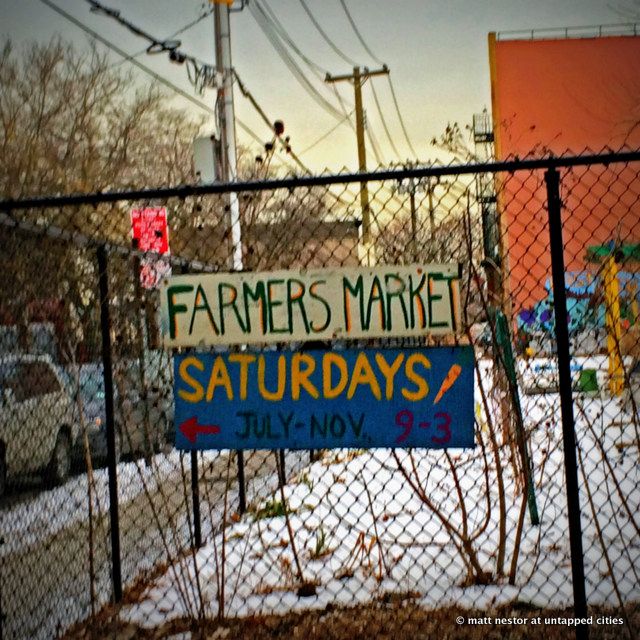Last-Minute NYC Holiday Gift Guide 🎁
We’ve created a holiday gift guide with presents for the intrepid New Yorker that should arrive just in time—


When the Daily News reported that a gut-renovated house was on sale in East New York for $600,000, we here at Untapped Cities did a double-take. That East New York? The infamous 75th precinct? Where the median income barely topped $30,000? And Thomas Jefferson High School had to close thanks to a 29% graduation rate? Obviously, things were changing in the area. It was time for us to pay another visit.

504 Georgia Avenue, East New York
East New York was founded in 1835 by John Pitkin and absorbed by New York City in 1897. Originally farm land, the neighborhood grew by leaps and bounds after the elevated IRT was run through in 1922. Jews, Italians, and Eastern Europeans lived side-by-side in a cozy and prosperous neighborhood; George Gershwin, Tony Danza, and Steve Buscemi all called the neighborhood home. Then came the ’60s: Blacks and Puerto Ricans moving in, whites moving out, housing projects, redlining and blockbusting. A 1971 Sunday Times Article likened living in the area to being the lone survivor in a Beckett play.

The area may have hit rock bottom in the early ’90s, when well over a hundred people were murdered every year. The area has come a long way since then, but the eighteen murders recorded in 2013 still make the 75th precinct the “murder capital” of New York. That said, burglary, robbery and rape are all way down, and the only type of crime actually on the rise in the area is larceny i.e. smartphone snatching. Though surrounding blocks are less cozy, Georgia Avenue itself, home of the expensive new property, is the very picture of easy middle-class living. When Untapped Cities visited, we saw a mother and her daughters hefting Trader Joe’s (!) bags down the sidewalk past a Mercedes SUV.

Tofu, hummus, and soy milk at the local grocery
So is East New York ripe for gentrification? A walking tour reveals few of stores that the young and well-to-do have come to know and love. There are plenty of hair salons and 99-cent stores, as well as a bizarre preponderance of tax prep places, but prepared food in the vicinity is strictly limited: there’s a chicken and biscuits place, a Golden Krust, and a Chinese take-away kitchen, where a fried chicken liver and a fried half-chicken cost $3.50 and $4.50, respectively (cheaper than Bushwick!). The local grocery offers more Spam and liter-bottles of soda than a gentrifier might like, though tofu, hummus, and soy milk have made inroads. As for night life, the gentrifier is advised to look elsewhere: as Barney, a longtime resident, explained to Untapped Cities, there’s not enough disposable income in the area to justify investment in a bar or nightclub (yet!).

There’s been a Farmer’s Market in E. NY since 1998
Or maybe the gentrifier will find entrée into one of the neighborhood’s speakeasies. Untapped Cities was lucky enough to be invited into a private bar beneath a certain Caribbean restaurant on Livonia Avenue, and as one Jamaican Rum sloshed into the next, residents shared their views on the prospect of gentrification.
“This is a medium-income neighborhood,” said one young man who chose to remain anonymous. “Not too many people on Section 8 [housing assistance].”
So, asked Untapped Cities, what would happen if richer residents began to move in?
“Motherf*ckin’ white people gonna f*ck sh*t up.”
Could he be more specific?
“Rent’ll go up and black people’ll have to move South where the rent is cheaper.”
He could very well be right. As another NY Daily News article reports, the area’s black population grew 13% during the period 2000-2010, as low-income residents were priced out of Bushwick and Bedford-Stuyvesant and moved to East New York as a “last resort.” Brooklyn’s overall black population fell 6% in the same period, meaning a total of 121,597 African-Americans abandoned the city altogether. If East New York is gentrified, that number could grow very much higher.
Subscribe to our newsletter